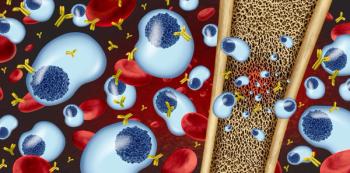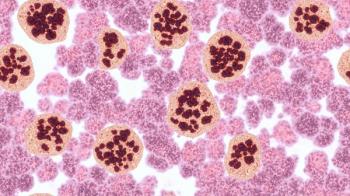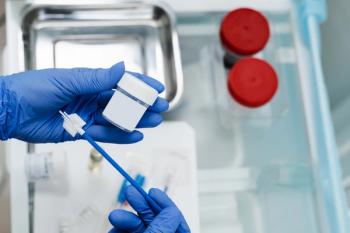
Effort Is Needed to Address Climate Change-Associated Cancer Risk in the United States
The data show that the 10-year survival rate of patients with breast cancer who survived Hurricane Katrina was much lower than those who did not face a major weather event.
Within the last few years, it has become apparent that climate change is increasing the exposure to
By analyzing state ranking assigned by Trust for America’s Health—which measured each state’s vulnerability to public health impacts relating to climate change—and comparing that data to each state’s annual rate of new cancer cases in the United States and percentage of adult smokers, cancer risks from climate change are easily identifiable.1-3
To conduct this assessment, the research team analyzed multiple sources of data to clarify the impact of climate change and associated cancer risks in all 50 states. Then, each state was ranked on a scale of state preparedness for climate change and health challenges (50 points), percentage of current adult smokers over 18 (20 points), and an average annual count of new cancer cases per capita (30 points).
During the assessment of the data, the research team found that the greenhouse effect causes ozone depletion and rising temperatures and makes way for increased exposure to UVB—a factor in non-melanoma skin cancer that plays a major role in the development of malignant melanoma.4 In turn, rising temperatures can create wildfires and poor air quality, which can lead to increased carcinogenic air pollutants.
In particular, climate change continues to affect cancer risk for populations who are the most vulnerable to such risk. Changes in rain levels and increased occurrences of extreme weather, such as hurricanes and tornadoes, can create reduced access to cancer-related pharmacological services and additional health care services, which can especially impact communities which are most at need of access to such services.
A study by Targeted Oncology revealed that the 10-year survival rate of patients with breast cancer who survived Hurricane Katrina was much lower than those who did not face a major weather event.5 Since patients with cancer have frequent interactions with pharmacies, radiologists, and other health care systems, these sudden disruptions in access to care often have severe health consequences.
Additionally, patients with lung cancer who have missed radiotherapy appointments due to a hurricane or any other major weather event have experienced significantly worse health outcomes than those who didn’t have a disruption of care.
By limiting access to public health care centers and pharmacies, these major weather disruptions can also cause health risks beyond the impact on patients who are already diagnosed with cancer. By impeding preventative screenings, blood tests, and other related care, major weather events and climate change can directly impact patients’ ability to receive diagnostic services and treatment early on.
Furthermore, when major weather events occur and cause medication delivery delays and cancer care disruption, oncologists and patients aren’t the only ones affected. The health care system supply chain often takes a massive hit and can have dangerous consequences for those living with cancer.
For example, in 2018, Hurricane Maria knocked out power to a major distributor of saline intravenous bags in Puerto Rico. This created a massive supply chain shortage that had significant consequences on medication delivery in cancer care.
Another factor is staffing shortages. Only 38% to 47% of hospital and critical care staff report to work one month after a climate disaster like an earthquake or tsunami, according to The Lancet Oncology.6
Additionally, when factoring in location, it’s clear that the southern United States faces the highest risk of climate change-associated cancer-causing factors, while western states face lower risk. Further, the South’s higher risk for potential severe storms coupled with the high rates of adult smokers and cancer cases overall has led Kentucky to become the most at-risk state for cancer in the country.
California and other western states like Colorado and Utah are among the states with the lowest risk of cancer caused by factors relating to climate change, as well as data that examines adult smokers and existing patients with cancer.
California is also led by a political environment and aptitude for fighting climate change and championing reform. The state has also pledged to reduce methane emissions by 40% below 2013 levels by 2030—this commitment exceeds the pace of many global standards.
For all patients, it’s also important to be vigilant about sun safety in the fight against cancer risk associated with climate change. Advising patients to cover up and use environmentally-friendly sunscreen can help them better protect themselves and reduce their risk of skin cancer. Additionally, efforts to create more urban green spaces can help as well to offset a climate change-associated increase in carbon dioxide in the air, while also simultaneously promoting healthier lifestyles and physical activity.
There is much we can do to address climate change-associated cancer risk as these issues progress across the country. However, addressing these problems will take effort and planning in order to facilitate the changes needed to support the health of our nation’s communities, and in particular the health of our nation’s most vulnerable individuals.
References
- Climate Change & Health: Assessing State Preparedness. Trust for America’s Health. Accessed April 25, 2022.
https://www.tfah.org/wp-content/uploads/2020/12/ClimateChange_HealthRpt_FINAL.pdf - Cancer Statistics At a Glance. U.S. Department of Health and Human Services, Centers for Disease Control and Prevention and National Cancer Institute. Published June 2021. Accessed April 25, 2022.
https://gis.cdc.gov/Cancer/USCS/#/AtAGlance/ - Current Cigarette Smoking Among Adults in the United States. Centers for Disease Control and Prevention. Accessed April 25, 2022.
https://www.cdc.gov/tobacco/data_statistics/fact_sheets/adult_data/cig_smoking/index.htm#:~:text=Current%20smoking%20has%20declined%20from,who%20have%20quit%20has%20increased - Health and Environmental Effects of Ozone Layer Depletion. United States Environmental Protection Agency. Accessed April 25, 2022.
https://www.cdc.gov/tobacco/data_statistics/fact_sheets/adult_data/cig_smoking/index.htm#:~:text=Current%20smoking%20has%20declined%20from,who%20have%20quit%20has%20increased - Hurricane Frequency and Other Climate Change Related Events, ‘Disproportionately’ Affects Cancer Care. Targeted Oncology. Published October 12, 2021. Accessed April 25, 2022.
- The effect of natural disasters on cancer care: a systematic review. The Lancet Oncology. Published September 2018. Accessed April 25, 2022.
Newsletter
Stay informed on drug updates, treatment guidelines, and pharmacy practice trends—subscribe to Pharmacy Times for weekly clinical insights.




















































































































































































































